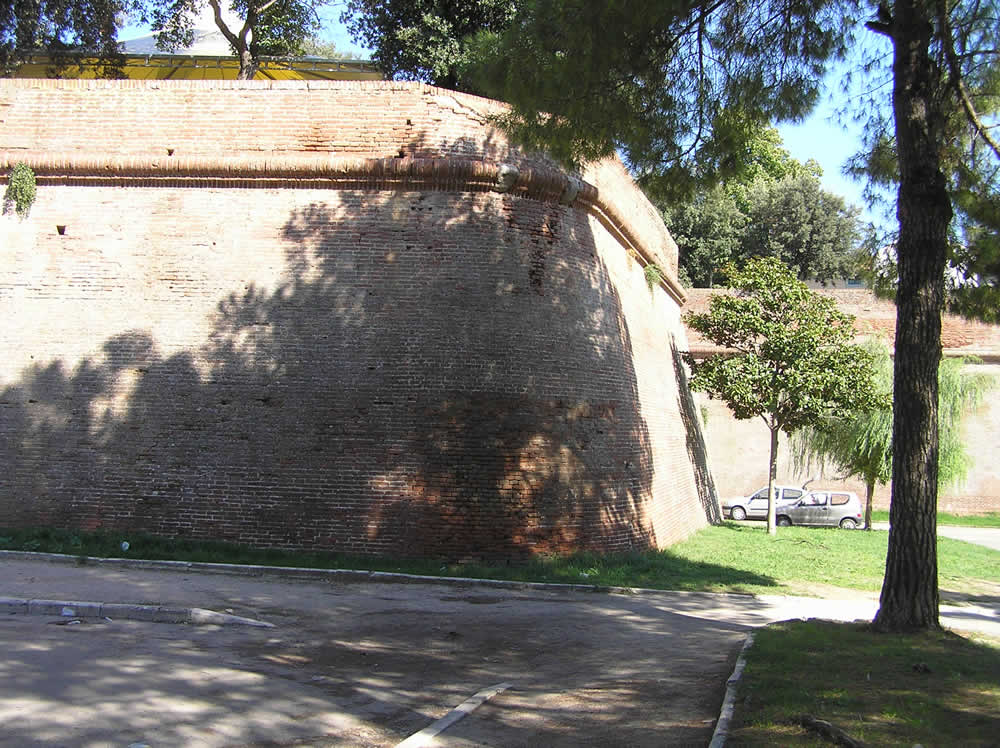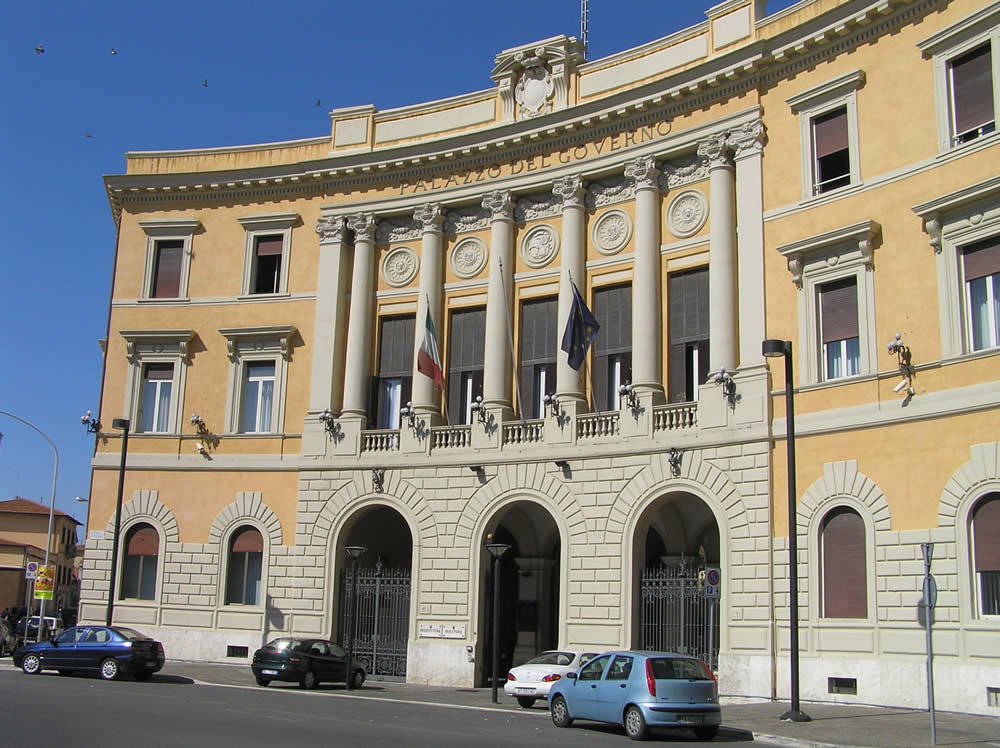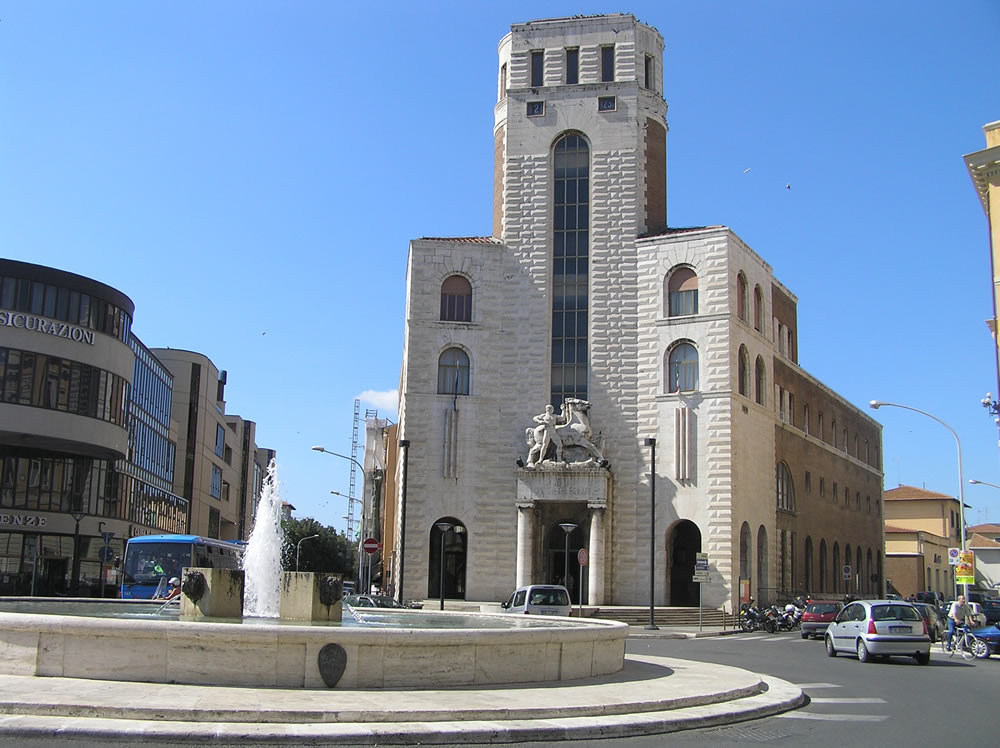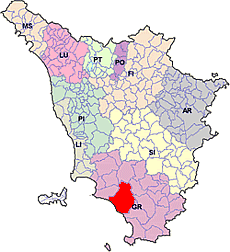Questo articolo è disponibile anche in:
![]() Italiano
Italiano
Grosseto (80,000 inhabitants (2008), 10 meters above sea level) is the most important town of the Maremma, lies at the heart of the vast flood plain of the river Ombrone a short distance from the sea. Grosseto is situated in Southern Tuscany, about 12 km from the sea in the Ombrone alluvional valley.
HISTORY
The origins of Grosseto can be traced to the High Middle Ages. In 803 A.D., there is the first written evidence of a settlement “in loco Grossito”, which by 973 A.D. had already assumed the characteristics of a settlement with a church and a castrum. Grosseto stood on a navigable stretch nearer to the mouth of the Ombrone River, and representing the main river port along the Tyrrhenian coast between Pisa and Roma.
In April 1138, following the translation of the bishop’s seat from the ancient Etruscan-Roman city of Roselle to Grosseto, Grosseto formally acquired the rank of city. The official recognition of the consular Municipality by the lords of the city (the Aldobrandeschi) dates back to 1204. In 1222, the Aldobrandeschi granted the inhabitants of Grosseto the power to name a captain of the people (podestà).
The years between 1334-1336 were that of Grosseto submission to Siena. In the early decades of the 1500’s, Grosseto represented one of the most important military outpost of the Siena’s State. Grosseto became part of the Florentine-Medici duchy in July 1557. The Medici left the territory of Grosseto in a state of neglect.
It was only under the Lorene, thanks to Pietro Leopoldo, that the province of Grosseto was finaly separated from Siena. In 1766 the Grand Duchy Peter Leopold entrusted to Leonardo Ximenes the “physical reduction” of the swampy areas. The effects of land reclamation were not decisive and the stagnation of the period during unification was the result. During Fascism were resumed the tense Lorraine attempts to eliminate the swamp with a system of reclaimed land. Numerous public buildings were built.

A WALLED CITY
The historic city is surrounded by a sixteenth-century hexagonal wall, but Grosseto originated as a castle already in the tenth century, when it was in the possession of the Aldobrandeschi. In the 14th century it became a possession of the Republic of Siena, and then with the fall of the latter under the dominion of Florence, Grosseto became the outpost of the Medici in Maremma. In the 16th century, the Medici built the hexagonal walls and the Medici Fortress, which we can admire today.
The construction of this fortress was planned in 1561, when Cosimo I visited Grosseto. The works, however, began in 1574 under Francesco I, based on a design by Badassarre Lanci, and completed 19 years later during the reign of Ferdinando I. Repetti in his Cartographic Dictionary of Tuscany describes Grosseto with the following words: “Fortified city. Not very large Strongly protected by its walls with 6 bastions and a fortress; the city has only two access gates: one towards the mainland, the other towards the sea “.
Some of the most important buildings of Grosseto are located within the walls, which until 1754 had a single access, the Porta Vecchia, still visible on the left of the southern bastion. The Renaissance walls with six bastions are well preserved as well as the bastion of the Medici Fortress with the Cassero Senese. The Cassero Senese together with the Old Gate (Porta Vecchia) is the only surviving part of the ancient medieval wall.

THE CATHEDRAL
Among the religious buildings located within the walls of the Medici are to note the cathedral dedicated to San Lorenzo, the church of San Francesco (13th century) and the Romanesque church of San Pietro, the oldest church of Grosseto dating back to 10th century which preserves the Romanesque apse. Inside the church of San Francesco are some frescoes and a crucifix attributed to Duccio di Buoninsegna.
At the center of the square of the Cathedral is the monument to Lepoldo II of Lorena and the so-called Cisternone, an artesian well built by the Lorena to supply water to the city. In this square overlook the Town Hall, a neoclassical building of the nineteenth century, and the Aldobrandeschi Palace or the Province Palace in neo-Gothic style of the early twentieth century.
The Cathedral is a building built between the late thirteenth century and the sixteenth century. The facade is in Romanesque style, but only the lower part is original, the rest was renovated in the mid-nineteenth century. On the right side of the church there are two Gothic windows and a beautiful portal of the fourteenth century. The bell tower of the Cathedral is built of brick and dates back to the fifteenth century, although it was restored in the early twentieth century. The interior of the cathedral has a Latin cross with three naves. In the Cathedral the most valuable work of art is the table of the Assumption of Matteo di Giovanni contained in an altarpiece by Antonio Ghini.
MUSEUMS
The city is home to an interesting archaeological museum with important statues of the imperial age from nearby Roselle, a collection of sacred art with valuable paintings including the Madonna of the Cherries by Sassetta and The Judgement by Guido da Siena. Another interesting museum is the Museum of Natural History, which presents the natural history of the Maremma.

Outside the walls in Piazza Fratelli Rosselli are some buildings of the early decades of the twentieth century, including the Post Office building (Palazzo delle Poste), designed by Angiolo Mazzoni 1932, the palace of the Provincial Agricultural Consortium (Consorzio Agrario Provinciale) of 1939 and the neoclassical Palace of Government (Palazzo del Governo) built in 1923.
A short distance from Grosseto, in the direction of Roselle, on top of the Poggio di Moscona is a large circular building called the “Tino di Moscona”, this construction is in stone, without openings, you can enter the interior through two openings in the collapsed walls, once inside there are traces of buildings and an underground room with vault. Near the village of Roselle is an important archaeological site where are the remains of the Etruscan and Roman city of Roselle.

USEFUL INFORMATION:
Weekly market in Grosseto: Thursday
Weekly market, in Piazza Esperanto, Piazza de Maria, Via Ximenes, every Thursday from 8.00 to 13.30.
Tourist Information Office – Grosseto
Agenzia per il Turismo della Maremma
Viale Monterosa, 206 58100 Grosseto
Tel. 0564462611 Fax 0564454606 e-mail: info@lamaremma.info
BIBLIOGRAPHY
- AA. VV. “Toscana” Guide Rosse Touring Club Italiano, 2007
- Boschi Mariano “Grosseto e le sue mura” 2014, Felici
- cur. Celuzza M.; Papa M., “Grosseto visibile. Guida alla città e alla sua arte pubblica” 2013, C&P Adver Effigi
- cur. Marcella Parisi “Grosseto dentro e fuori porta. L’emozione e il pensiero” Associazione Archeologica Maremmana, Siena, C&P Adver Effigi, 2001
Questo articolo è disponibile anche in:
![]() Italiano
Italiano
